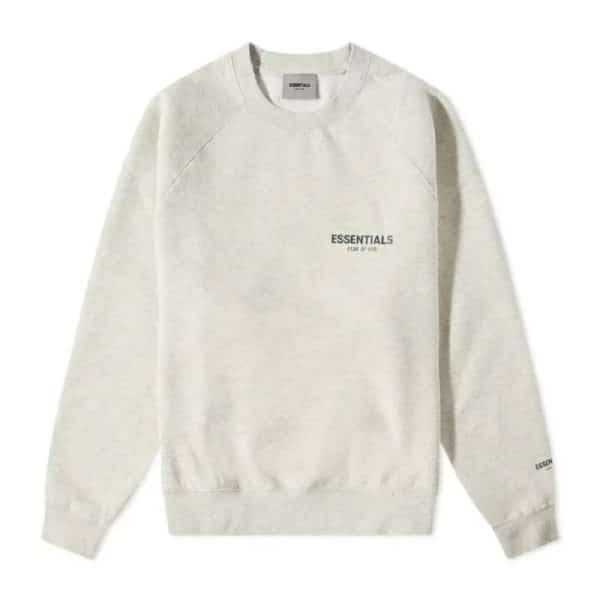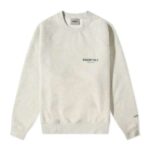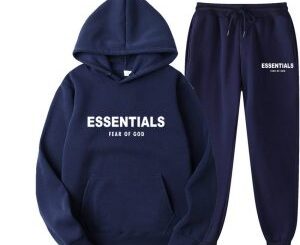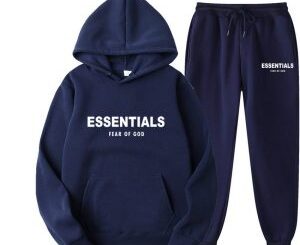In today’s fashion landscape, sustainability has moved from a niche concern to a mainstream priority. Consumers are increasingly aware of the environmental and ethical impact of their wardrobe choices, from the production of fabrics to labor practices and garment lifespan. Amid this shift, essential clothing pieces—the foundational garments that form the backbone of any wardrobe—play a pivotal role in promoting sustainable fashion essentials clothing is defined by versatility, durability, timeless style, and ethical production. These pieces reduce the need for excessive consumption, simplify wardrobe choices, and encourage a mindful approach to dressing. By focusing on essentials, individuals can build a sustainable wardrobe that balances style, function, and environmental responsibility. This article explores the multifaceted role of essential clothing in sustainable fashion and provides guidance on building a wardrobe that is both stylish and conscientious.
1. Reducing Overconsumption Through Essential Pieces
One of the biggest challenges in fashion sustainability is overconsumption. Fast fashion trends and seasonal collections encourage people to buy more than they need, resulting in waste and pollution. Essential clothing pieces combat this problem by prioritizing quality and longevity over quantity.
Key ways essentials reduce overconsumption:
-
Versatility: A white button-up shirt or a pair of dark denim jeans can be styled in countless ways, reducing the need to purchase multiple items.
-
Timelessness: Classic silhouettes, neutral colors, and minimal detailing ensure that garments remain relevant across seasons and trends.
-
Investment in durability: High-quality materials and construction mean that essentials last longer, decreasing the frequency of replacements.
By focusing on essentials, consumers invest in fewer, more functional garments, directly addressing the environmental costs of mass production and disposal.
2. Minimizing Environmental Impact
The production of clothing is resource-intensive. Conventional cotton farming, synthetic fibers, and chemical dyes contribute to water pollution, greenhouse gas emissions, and soil degradation. Essential clothing can mitigate these environmental impacts in several ways:
-
Sustainable materials: Many essential pieces are made from organic cotton, hemp, Tencel, linen, or recycled fibers, which require fewer resources and produce less waste.
-
Reduced manufacturing footprint: Timeless, versatile pieces are often produced in smaller batches or with ethical brands, which tend to focus on environmentally conscious practices.
-
Longevity: Durable fabrics and classic cuts mean items are worn longer, lowering the frequency of production cycles and reducing the cumulative environmental footprint.
Essential clothing thus aligns functionality with sustainability, ensuring that fashion choices are less harmful to the planet.
3. Encouraging Mindful Consumption
A sustainable wardrobe is not just about the garments themselves—it’s about how individuals consume fashion. Essential clothing encourages mindful consumption by making it easier to focus on purpose and utility rather than impulsive purchases.
Principles reinforced by essential clothing:
-
Buy fewer, better pieces: Essentials are versatile, meaning that fewer garments can cover more occasions.
-
Focus on quality over quantity: Choosing well-constructed items reduces waste and promotes longevity.
-
Consider ethical production: Essentials are often sourced from brands committed to fair labor practices and sustainable methods.
Mindful consumption nurtures a culture of responsibility, transforming fashion from a disposable commodity into a deliberate, thoughtful practice.
4. Versatility as a Sustainable Strategy
Versatility is one of the defining characteristics of essential clothing and a cornerstone of sustainable fashion. Pieces that can be styled in multiple ways, worn across seasons, or adapted for different occasions reduce the need for specialized garments.
Examples of versatile essentials:
-
White button-up shirts: Can be tucked into trousers for work, layered over a T-shirt for casual outings, or paired with a skirt for evenings.
-
Neutral trousers or jeans: Function in casual, professional, and semi-formal contexts.
-
Classic blazers or jackets: Transition from office wear to weekend style seamlessly.
-
Timeless knitwear: Works alone in warm weather or layered for colder months.
By prioritizing versatile pieces, consumers maximize wardrobe efficiency and reduce unnecessary purchases, which is a direct contribution to sustainability.
5. Ethical and Transparent Production
Sustainable fashion is not just about environmental impact—it’s also about ethical labor practices. Many essential clothing brands emphasize transparency and social responsibility. This means that workers are treated fairly, wages are just, and working conditions are safe.
Key practices associated with ethical essential clothing:
-
Fair trade certifications: Ensure that artisans and factory workers are paid fairly and work in safe conditions.
-
Small batch production: Minimizes waste and ensures higher quality control.
-
Transparent supply chains: Allow consumers to understand the origin and process of each garment.
Ethical production aligns with the sustainable fashion ethos, ensuring that essential clothing benefits both people and the planet.
6. Building a Capsule Wardrobe for Sustainability
A capsule wardrobe is a collection of essential pieces that are interchangeable and versatile, creating multiple outfits with a minimal number of items. Capsule wardrobes are inherently sustainable because they:
-
Reduce the need for seasonal trend purchases.
-
Prioritize quality over quantity.
-
Encourage thoughtful, intentional styling.
-
Simplify laundry, care, and maintenance, reducing energy and water consumption.
By constructing a capsule wardrobe from high-quality essentials, individuals can practice sustainable fashion in a tangible, practical way, demonstrating that style and responsibility are not mutually exclusive.
7. Durability and Longevity
Essential clothing is characterized by its durability, which is central to sustainable fashion. Garments that are well-constructed from high-quality fabrics last longer, reducing the overall environmental footprint.
Considerations for longevity:
-
Fabric strength: Cotton, wool, linen, and recycled fibers tend to wear longer than low-cost synthetics.
-
Reinforced seams and quality stitching: Prevent premature wear and tear.
-
Classic designs: Timeless cuts resist the pressure of fleeting trends, extending wardrobe relevance.
Investing in durable essentials means fewer replacements, less textile waste, and reduced demand for resource-intensive production.
8. Cost-Effectiveness and Environmental Responsibility
While sustainable essentials may have a higher upfront cost, they are cost-effective in the long term due to their longevity and versatility. Fewer replacements translate into less spending and a smaller environmental footprint.
Economic benefits of sustainable essentials:
-
Fewer impulse purchases reduce wardrobe clutter.
-
Multi-purpose garments reduce the total number of items needed.
-
Durable fabrics minimize wear and tear, extending usability.
Cost-effectiveness reinforces sustainable consumption, demonstrating that ethical fashion can align with financial practicality.
9. Encouraging Personal Style and Identity
Essential clothing allows individuals to express personal style while adhering to sustainable principles. By focusing on neutral, timeless pieces, consumers can experiment with layering, accessories, and unique styling without accumulating excess.
Styling essentials sustainably:
-
Mix classic pieces with one or two statement items for seasonal flair.
-
Rotate versatile items for work, leisure, and social occasions.
-
Incorporate ethical accessories like recycled-metal jewelry, vegan leather bags, or sustainable footwear to personalize outfits.
Essentials enable sustainable self-expression, proving that fashion can be both ethical and individualistic.
10. Practical Tips for Choosing Sustainable Essentials
Building a sustainable wardrobe through essential clothing requires intentionality and planning. Here are some practical steps:
-
Evaluate your lifestyle: Focus on pieces that match your daily activities and climate.
-
Prioritize timeless silhouettes: Avoid trend-driven items that will quickly fall out of style.
-
Choose quality fabrics: Organic cotton, linen, wool, and recycled materials are both durable and eco-friendly.
-
Check certifications: Look for GOTS, Fair Trade, OEKO-TEX, or other sustainability labels.
-
Invest in versatile items: Neutral colors, adaptable cuts, and multi-purpose pieces maximize utility.
-
Consider ethical brands: Support companies that emphasize transparency, fair labor, and environmental stewardship.
By following these steps, consumers can make impactful decisions that contribute to sustainability while maintaining style and practicality.
Conclusion: Essentials as the Cornerstone of Sustainable Fashion
Essential clothing pieces play a Essential Hoodie crucial role in sustainable fashion by reducing overconsumption, promoting longevity, and supporting ethical production. They simplify wardrobe choices, maximize versatility, and align fashion with personal and environmental responsibility.By investing in timeless, high-quality garments, individuals can build a wardrobe that reflects style, ethics, and sustainability simultaneously. Essential clothing is not only practical—it is transformative, demonstrating that responsible choices in fashion can have meaningful, long-lasting impacts.In a world where fashion often encourages excess and disposability, essential clothing offers a blueprint for conscious, sustainable, and elegant dressing. Choosing wisely, caring for garments, and investing in ethical production practices ensures that fashion remains a positive force for both people and the planet.






